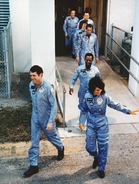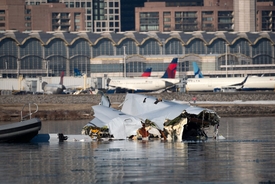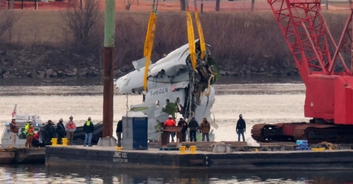On January 28, 1986, the infamous Challenger shuttle launched from the Kennedy Space Center. Then, 73 seconds after liftoff, it exploded, killing all those on board.
Lt. Gen. Rich Scobee remembers the day well. He was in the Air Force Academy at the time, and was approaching his graduation date. On the day of the Challenger launch, though, he was not focused on his studies; he was focused on his father, mission commander Dick Scobee.
He had travelled to the space centre and stood atop the roof to get the best view. He recalls feeling excited, and was grateful for the clear skies, as the separation of the rocket boosters would show up perfectly. But that feeling did not last.
"I knew something was wrong immediately," Rich Scobee said in an interview with CNN. "I looked at my mom and she had figured that out too."
When the shuttle burst into flames, he knew there was no hope.

Dick Scobee died that day, as did four other astronauts and two payload specialists: Gregory Jarvis, Ronald McNair, Ellison Onizuka, Judith Resnik, Christa McAuliffe and Mike Smith.
"If you have ever lost somebody that you loved, it's that exact feeling," Rich said. "I just shared my loss with the country. I think it's my responsibility to share some of that - because it's part of our history."
Almost one in five Americans witnessed the tragedy that day as it aired live on TV, many of whom were schoolchildren who had tuned in to see Christa McAuliffe - a teacher - become the first civilian in space. And, for those who did see it, the memory lives on - but Scobee wishes people knew more about his father.
"Everyone saw how my father died and they saw the end of his career. What they didn't see was his life, which was amazing."

Dick was a mechanic, then an officer, and finally a pilot in the airforce before being recruited by NASA. "Going from turning wrenches on a flight line to commanding a space shuttle - no country in the world could you do that except for this one," Rich said.
On a personal level, too, Dick was a very special person. "That guy would make you feel good about you," Rich said. "He just had a way of making you feel successful."
Though his father may have lost his life in this tragic accident, Rich was still inspired to follow in his footsteps and succeed in the Air Force. What's more, he also is a strong proponent of space travel and believes that it is worthwhile to send people to Mars to learn more about it.
"Although space is dangerous - as explorers we need to go because we don't fully understand things until one of us touches it," he said."Manned space flight is really important to who we are."

It was discovered shortly after the incident that the explosion happened due to a seal being used that was not designed to handle the cold conditions it was put through. This, in turn, caused a joint in the right rocket booster to fail, and subsequently allowed pressurised burning gas to leak out of the ship.
The disaster remains a blight on America's pioneering history of space travel.




.jpg_PE1NDA?tr=h-184)
.jpg_Yi9Mrv?tr=h-184)